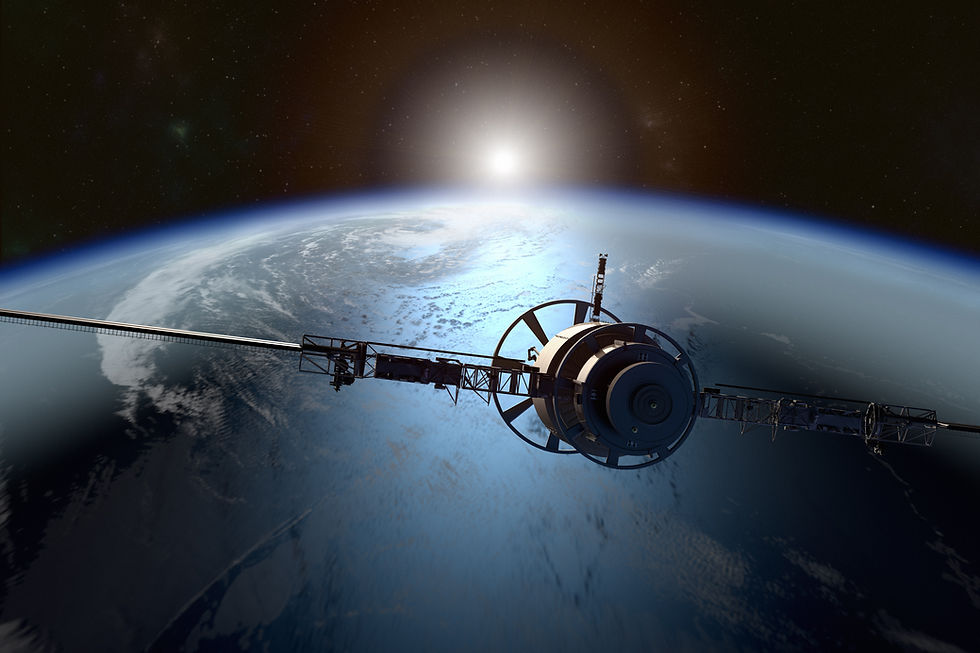Aditya L-1: India's Mission to the Sun's Atmosphere
- Shreya Giri
- Sep 2, 2023
- 5 min read
Space exploration has always captivated the imagination of humanity, with missions to the moon and Mars garnering significant attention. However, the vastness of our solar system provides numerous intriguing opportunities for scientific research and discovery. One such mission that has piqued the interest of scientists and space enthusiasts alike is India's Aditya L-1, a remarkable endeavor to study the Sun's outermost layer, the solar corona.
In this article, we will dive deep into the Aditya L-1 mission, exploring its objectives, significance, scientific goals, and the technological marvels.

Aditya L-1 Mission: India's First Solar Mission
The Aditya L1 mission is a space-based observatory that will study the Sun from a vantage point in the Sun-Earth L1 Lagrange point, which is located about 1.5 million kilometers from Earth. The mission is scheduled to be launched on September 2, 2023, by the Indian Space Research Organisation (ISRO) using its Polar Satellite Launch Vehicle (PSLV).
The Aditya L1 mission is named after Aditya, the Hindu god of the Sun. The mission's primary objective is to study the solar corona, the outermost layer of the Sun's atmosphere. The corona is a million times hotter than the Sun's surface, and its dynamics are not well understood.
The Aditya L1 mission will use a variety of instruments to study the corona, including a coronagraph, an ultraviolet telescope, and an X-ray spectrometer.
The Aditya L1 mission will also study other aspects of the Sun, such as its magnetic field, its flares and coronal mass ejections, and its impact on Earth's atmosphere and climate. The mission's findings will help scientists to better understand the Sun and its influence on our planet.
The Aditya L1 Mission's Payloads
The Aditya L1 mission will carry seven payloads, each of which will study a different aspect of the Sun. The payloads are:
Visible Emission Line Coronagraph (VELC): The VELC will image the solar corona in visible light. This will allow scientists to study the structure and dynamics of the corona.
Solar Ultraviolet Imaging Telescope (SUIT): The SUIT will image the Sun in ultraviolet light. This will allow scientists to study the temperature and composition of the corona.
Solar Low Energy X-ray Spectrometer (SoLEXS): The SoLEXS will measure the X-ray emissions from the Sun. This will allow scientists to study the heating and dynamics of the corona
High Energy L1 Orbiting X-ray Spectrometer (HEL1OS): The HEL1OS will measure the high-energy X-ray emissions from the Sun. This will allow scientists to study the acceleration of particles in the solar atmosphere.
Aditya Solar Wind Composition Analyzer (ASWCA): The ASWCA will measure the composition of the solar wind, which is a stream of charged particles that flows from the Sun. This will allow scientists to study the origin and dynamics of the solar wind.
Aditya Magnetometer (ADM): The ADM will measure the magnetic field of the Sun. This will allow scientists to study the structure and dynamics of the solar magnetic field.
Aditya Charged Particle Analyzer (ACPA): The ACPA will measure the charged particles in the solar atmosphere. This will allow scientists to study the acceleration and transport of particles in the solar atmosphere.

Objectives
The Aditya L1 mission is poised to delve into the intricate dynamics of the solar upper atmosphere, encompassing both the chromosphere and the corona. This journey of scientific discovery encompasses a wide range of objectives, including:
Probing Chromospheric and Coronial Heating: A fundamental puzzle in solar science is the heating of the chromosphere and the corona. Aditya L1 aims to uncover the underlying physics behind the elevated temperatures observed in these regions and the mechanisms responsible for this phenomenon.
Deciphering Partially Ionized Plasma: The solar upper atmosphere is home to a partially ionized plasma, a unique and complex state of matter. This mission will shed light on the intricate physics governing this plasma, enhancing our understanding of its behavior.
Unraveling the Origins of Coronal Mass Ejections (CMEs) and Solar Flares: Aditya L1 is set to investigate the genesis of two of the most powerful and enigmatic solar events, CMEs and solar flares, elucidating the processes that trigger these eruptive phenomena.
In-situ Particle and Plasma Observations: The mission will provide valuable in-situ data on particles and plasma emanating from the Sun. This data will be pivotal in studying the dynamic interplay of particles originating from our star.
Examining the Physics of Solar Corona and Its Heating Mechanisms: Aditya L1 is dedicated to unraveling the mysteries of the solar corona and the mechanisms responsible for its heating. This region, hotter than the Sun's surface, presents an intriguing scientific puzzle.
Diagnostics of Coronial Plasma: Through temperature, velocity, and density measurements, the mission will offer crucial diagnostic information about the coronal plasma and coronal loops, aiding scientists in deciphering their intricate properties.
Charting the Development and Dynamics of CMEs: Aditya L1 will track the evolution of CMEs, from their inception to their dynamic journey through the solar system. This data will enhance our predictive capabilities concerning space weather.
Unveiling Solar Eruptive Events: By identifying and dissecting the sequence of processes occurring at multiple layers of the Sun's atmosphere, including the chromosphere, base, and extended corona, the mission aims to elucidate the intricate chain of events leading to solar eruptive phenomena.
Magnetic Field Topology and Measurements: Understanding the Sun's magnetic field is fundamental to grasping solar activity and its influence on space weather. Aditya L1 will delve into the magnetic field topology of the solar corona and provide measurements vital for comprehensive analysis.
Drivers for Space Weather: The origins, composition, and dynamics of the solar wind, a continuous stream of charged particles emitted by the Sun, will be thoroughly studied. This data will aid in identifying the drivers behind space weather and its impacts on our technological infrastructure.

The Aditya L1 Mission's Impact
The Aditya L1 mission is expected to make significant contributions to our understanding of the Sun. The mission's findings will help scientists to better understand the solar corona, the Sun's magnetic field, solar flares and coronal mass ejections, and the Sun's impact on Earth's atmosphere and climate.
The Aditya L1 mission is a major milestone for India's space program. The mission is the first of its kind in India, and it will showcase India's capabilities in space science and technology. The mission is also expected to have a significant impact on the global scientific community.
The Aditya L1 mission is a valuable addition to the international effort to study the Sun. The mission's findings will be shared with the global scientific community, and they will help to advance our understanding of the Sun and its influence on our planet.
The Future of Solar Science
The Aditya L1 mission is just one of many missions that are currently studying the Sun. In the coming years, we can expect to see even more missions launched to study the Sun. These missions will use a variety of techniques to study the Sun, and they will provide us with a deeper understanding of this important star.
The Aditya L1 mission is a significant step forward in our understanding of the Sun. The mission's findings will help us to better understand the Sun's role in our solar system and its impact on Earth. The mission is also a major milestone for India's space program, and it showcases India's capabilities in space science and technology.
Conclusion
The Aditya L1 mission is poised to unlock the secrets of the Sun's upper atmosphere, from the intricacies of plasma physics to the drivers of space weather. By peering into these celestial mysteries, this mission not only contributes to our understanding of the Sun but also enhances our ability to predict and mitigate the effects of solar activity on Earth and space-based technologies.

About the Author
Shreya Giri is a talented SEO content writer with a unique flair for captivating readers. With a bachelor's degree in geography, her passion for crafting exceptional content shines through in every word she writes. Shreya's expertise lies in her ability to seamlessly blend language and storytelling, effortlessly capturing the attention of her audience.
She is currently pursuing a Master's degree in geography and has a remarkable talent for transforming intricate concepts into captivating narratives that have a lasting impact. With Shreya, you can expect excellent, captivating content that will keep you engaged from beginning to end.
You can connect with her through-
My-Lekh profile- lekh.com/profile/shreyagiri06/profile LinkedIn profile- https://www.linkedin.com/in/shreya-giri-a0a607265
Email- shreyagiri06@gmail.com





🔥👏🏽👏🏽